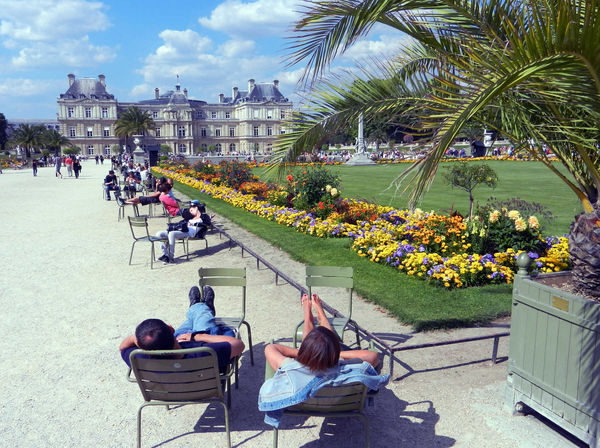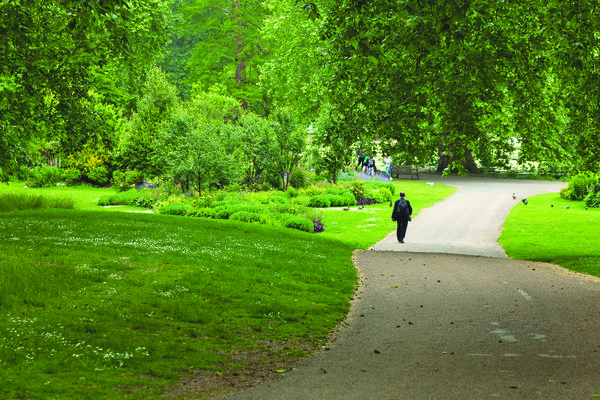Park Picks: Favorite Green Getaways in Paris, London, and Barcelona
By Rick Steves

Europe's greatest major cities are filled with exciting bustle and thrilling "I've always wanted to see this" sights. But the grandeur of a big city can get drowned out quickly by the hubbub of humanity and the panicky pressure to pack in the sightseeing. Happily, Europe's cities all offer peaceful parks and gardens to stroll, bike, or just sit and people-watch.
Here are a few of my favorite spaces in three busy cities to get away from the crowds, catch my breath, and hear myself think while I take in the local scene.
Paris
On my most recent summer trip to Paris, I was struck by the special energy of its riverside promenade along the Seine, a space given over to living the good life. In what used to be a street busy with traffic is a new world for exercising, having fun with the kids, or simply dangling one's feet over the water and being in the moment.
And, for a month every summer, a one-mile stretch of the Seine's Right Bank turns into the Paris Plages — colorful urban beaches with 2,000 tons of sand. It's not the French Riviera, but this string of fanciful faux beaches — with potted palm trees, hammocks, and lounge chairs — makes a fun relaxation zone. You'll also find "beach cafés," climbing walls, prefab pools, trampolines, a library, beach volleyball, badminton, and Frisbee zones.
Elsewhere in Paris, parks let commoners luxuriate like aristocrats: The city's grandest park, Tuileries Garden, was once the private property of kings and queens. Close to the Louvre, Orangerie, and Orsay museums, the Tuileries is a wonderful place to clear your mind after viewing all that artwork. Scattered among these greenery beds are several cafés, ponds with toy boats for rent, and trampolines for jumping.
One of Paris' most beautiful spots is Luxembourg Garden, an Impressionist painting brought to life. It's busy but still relaxing; some of the prettiest (and quietest) sections lie around its perimeter. Within its 60 acres, there's a tranquility and refined orderliness, with special rules governing its use (for example, where cards can be played, where dogs can be walked, and where joggers can run). Slip into a green chair pondside, go jogging, play tennis or basketball, sail a toy sailboat, or take in a chess game or marionette show. The brilliant, impeccably tended flower beds are completely changed three times a year, and the boxed trees are brought out of the orangerie in May.
More off Paris' beaten path is La Coulée Verte Park, also known as the Promenade Plantée. This skinny, two-mile-long park is a narrow garden walk on a former elevated railway line. It's now a delightful place for a refreshing stroll or run, and amateur botanists appreciate its varying vegetation.
London
London's parks — like just about everything in the city — sit on a foundation of history. These inviting green spaces, once the domain of kings, are now the sunbathing grounds of commoners. Hyde Park, a 600-acre expanse in western London, was originally Henry VIII's hunting grounds. Today, it's the perfect place for museumed-out tourists to play and run free; it's filled with lush greenery — along with paddleboats, a lakeside swimming pool, rental bikes, a tennis court, and a putting green. On Sundays beginning around midday, visit Hyde Park's Speaker's Corner to see grassroots democracy in action. Here you'll hear all sorts of passionate souls rant and rave about goings-on — and hecklers with opposing viewpoints.
Adjacent to Hyde Park, beautiful Kensington Gardens was once the private playground for royals living in Kensington Palace. It's ideal for strolling, with memorials, fountains, statues (including a bronze Peter Pan), and a Peter Pan–themed play area for the kids.
West of London is Kew Gardens, with 300 acres and 33,000 types of plants. For a quick visit, spend a fragrant hour wandering through three buildings: the Palm House, a humid Victorian world of iron, glass, and tropical plants; a Waterlily House that Monet would swim for; and the Princess of Wales Conservatory, a meandering modern greenhouse growing countless cacti, bug-munching carnivorous plants, and more.
Barcelona
Spain's second-biggest city is a crowded tourist mecca — but you'll find respite in its biggest, greenest space — Citadel Park — an oasis of wide pathways, verdant trees and grass, and a zoo. Originally the park was the site of a much-hated military citadel, a symbol of Spanish rule over Catalunya. In 1888, Barcelona transformed the fort for a Universal Exhibition (world's fair). The stately Triumphal Arch at the top of the park served as the fair's main entrance — symbolically celebrating the citadel's removal. Enjoy an ornamental fountain that the young Antoni Gaudí, the city's most famous Modernist architect, helped design; consider a jaunt in a rental rowboat on a lake; and take in the tropical Umbracle greenhouse and the Hivernacle winter garden.
Sometimes Americans pack too much into their itineraries. Slowing down to appreciate a park opens you up to a slower-paced, more locally grounded approach to a foreign culture.

